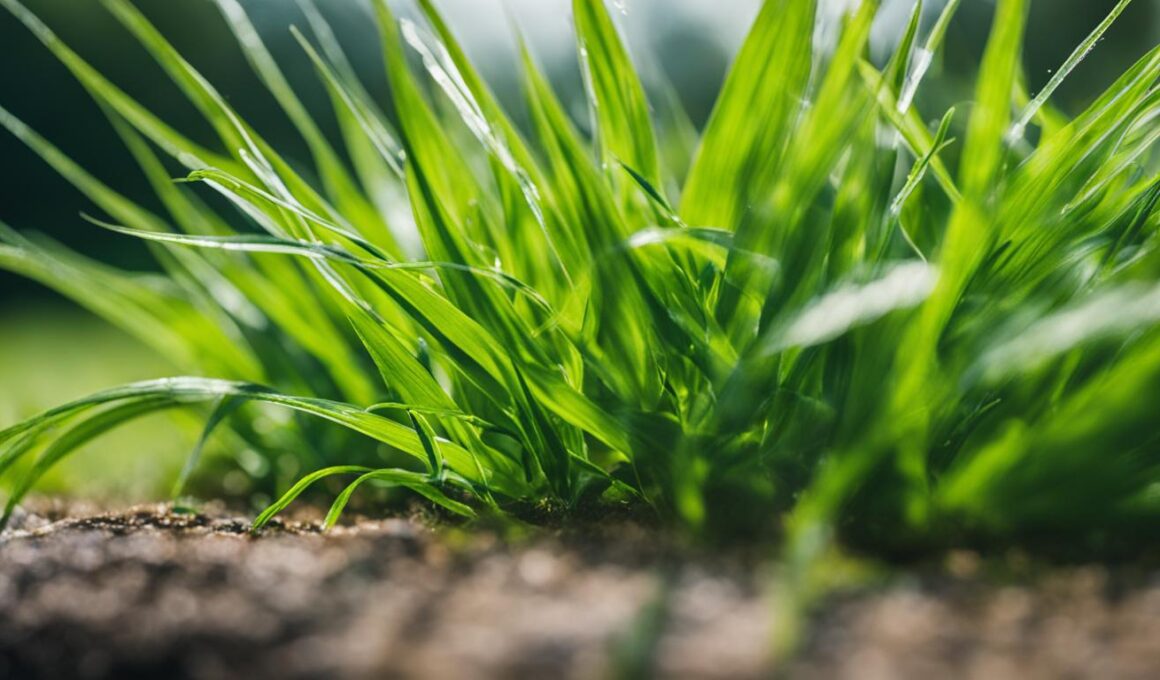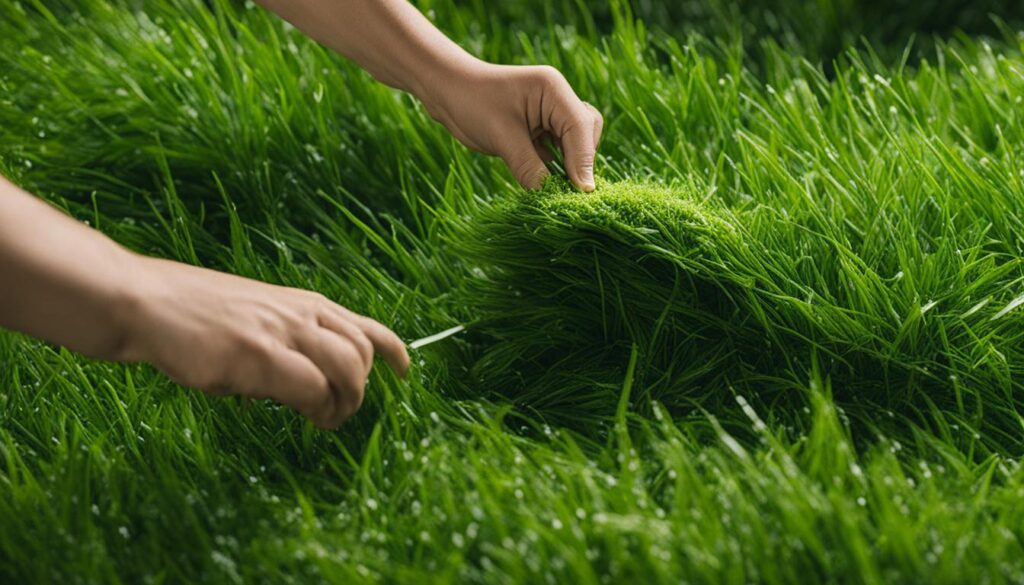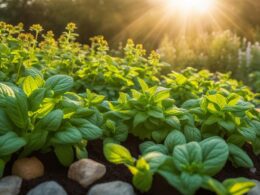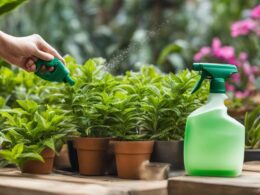Homemade crabgrass killer is a natural and effective solution for eliminating pesky weeds from your lawn. With the use of common household ingredients like baking soda, vinegar, and boiling water, you can create a powerful crabgrass killer that is safe for your lawn and the environment. This DIY guide will provide you with step-by-step instructions on how to make and use homemade crabgrass killer, as well as tips for preventing future weed infestations. Say goodbye to crabgrass and hello to a beautiful, weed-free lawn!
Post Summary
- Homemade crabgrass killer is a natural and effective solution for eliminating weeds from your lawn.
- Baking soda, vinegar, and boiling water are common household ingredients that can be used to create a homemade crabgrass killer.
- Follow the step-by-step instructions in this DIY guide to make and use homemade crabgrass killer.
- Prevent future weed infestations by implementing the tips provided in this guide.
- Say goodbye to crabgrass and enjoy a beautiful, weed-free lawn!
The Many Uses of Baking Soda in the Garden
Baking soda, also known as sodium bicarbonate, is a versatile ingredient that has many uses in the garden. In addition to being a popular baking ingredient, baking soda can also be used as a natural pesticide, bait for eliminating ants, and a fungicide. When it comes to killing crabgrass, baking soda is an effective and safe option. Its phytotoxic properties slow down the germination and growth of crabgrass, leading to its eventual death.
One of the main benefits of using baking soda as a crabgrass killer is that it is safe for the environment and does not contain harmful chemicals. Unlike synthetic herbicides, baking soda does not leave behind any residue that could harm beneficial insects, birds, or other wildlife in your garden.
To use baking soda as a crabgrass killer, simply sprinkle it directly onto the crabgrass plants. Be sure to cover the entire plant with a generous amount of baking soda, as this will help ensure that it reaches the root system. Once applied, the baking soda will slowly dry out the crabgrass, causing it to wither and die over time.
“Baking soda is a powerful tool in organic gardening. Its versatile nature allows it to be used in various ways, making it a must-have ingredient for any garden enthusiast.” – Gardening Expert
The Many Uses of Baking Soda in the Garden
| Use | Method |
|---|---|
| Pesticide | Mix 1-2 tablespoons of baking soda with a gallon of water and spray onto affected plants. |
| Ant Bait | Create a mixture of equal parts baking soda and powdered sugar. Spread the mixture near ant trails to attract and eliminate ants. |
| Fungicide | Mix 4 teaspoons of baking soda with 1 gallon of water and spray onto plants affected by fungal diseases. |
In addition to killing crabgrass, baking soda can also help neutralize soil acidity, repel pests, and inhibit the growth of weeds. Its versatility makes it a valuable tool for any gardener looking for natural and effective solutions to common gardening problems.
By harnessing the power of baking soda, you can eliminate crabgrass and other pesky weeds from your garden without harming the environment. Whether you’re looking to control pests, combat fungal diseases, or improve soil quality, baking soda can be a
How to Kill Crabgrass With Baking Soda
Killing crabgrass with baking soda is a simple and effective method that can help you regain control over your lawn. By following a few easy steps, you can eliminate this stubborn weed and prevent it from spreading further. Here is a step-by-step guide:
- Start by wetting the crabgrass thoroughly. This will make it easier for the baking soda to adhere to the weed and penetrate its roots.
- Next, cover any surrounding plants or grass that you want to protect from the baking soda. This will prevent any damage or unintended killing of desired vegetation.
- Now, sprinkle a generous amount of baking soda directly onto the damp crabgrass. Make sure to cover the entire weed, including the leaves, stems, and surrounding soil.
- Allow the baking soda to sit on the crabgrass for at least 48 hours. During this time, the baking soda will dry out the weed, weaken its roots, and ultimately kill it.
- After 48 hours, carefully discard the dead crabgrass by pulling it out from the roots. Be sure to wear gloves to protect your hands.
- If there are patchy areas left by the removed crabgrass, consider reseeding those areas to fill in the gaps and promote healthy grass growth.
- Finally, maintain your lawn by practicing proper watering, mowing, and regular weeding to prevent future crabgrass infestations.
Using baking soda as a crabgrass killer offers a natural and safe alternative to chemical herbicides. It is important to note that baking soda may also affect other plants, so it’s crucial to take precautions and only apply it to specific areas where crabgrass is present. With patience and consistency, you can effectively eliminate crabgrass and enjoy a healthier, weed-free lawn.
Benefits of Using Baking Soda as a Crabgrass Killer
“Baking soda is not only an affordable and easily accessible ingredient, but it is also safer for the environment compared to chemical herbicides. By using baking soda to kill crabgrass, you are avoiding harmful toxins and reducing your carbon footprint.”
Baking soda acts as a desiccant, drying out the leaves and roots of the crabgrass. Unlike chemical herbicides, it does not leave any harmful residues in the soil, making it a more environmentally friendly option. Additionally, baking soda is readily available in most households, making it a convenient and cost-effective solution.
However, it is important to note that while baking soda can be effective in killing crabgrass, it may not completely eradicate the weed. For severe infestations, multiple applications or combined methods may be necessary. Regular maintenance and preventive measures, such as proper lawn care and regular weeding, are crucial for long-term crabgrass control.
In Conclusion
Using baking soda as a crabgrass killer provides a natural and safe alternative to chemical herbicides. By following the simple steps outlined above, you can effectively eliminate crabgrass and promote a healthier, weed-free lawn. Remember to take precautions to protect surrounding plants and practice regular maintenance to prevent future crabgrass infestations. With patience and consistency, your lawn will flourish and become the envy of the neighborhood.
Other Natural Crabgrass Killer Recipes
While baking soda is a popular and effective crabgrass killer, there are several other natural ingredients that you can use to combat this stubborn weed. One such ingredient is vinegar. Vinegar is a powerful weed killer due to its high acidity, which destroys the cell membranes of plants, including crabgrass. To use vinegar as a weed killer, simply fill a spray bottle with distilled white vinegar and spray it directly onto the crabgrass. Be sure to avoid spraying any surrounding plants as vinegar can also damage them.
Boiling water is another natural and inexpensive crabgrass killer. Boiling water works by scalding the crabgrass and damaging its cell structure, leading to its eventual death. To use boiling water as a weed killer, simply bring a pot of water to a rolling boil and carefully pour it directly onto the crabgrass. Take caution not to splash the boiling water onto yourself or surrounding plants.
If you prefer a ready-to-use natural weed killer, there are organic options available on the market. One such product is Natural Armor Weed and Grass Killer, which contains all-natural ingredients that are safe for pets and children. This organic weed killer effectively eliminates weeds, including crabgrass, without harming the environment. Simply follow the instructions on the product label for best results.
Experimenting with different homemade crabgrass killer recipes can help you find the method that works best for your lawn. Whether you choose baking soda, vinegar, boiling water, or an organic weed killer, you can take control of your lawn and say goodbye to crabgrass. Remember to always follow the instructions carefully and take precautions to protect yourself and surrounding plants.
| Crabgrass Killer | Main Ingredient | Effectiveness |
|---|---|---|
| Baking Soda | Baking soda | Effective |
| Vinegar | Distilled white vinegar | Effective |
| Boiling Water | Hot water | Effective |
| Natural Armor Weed and Grass Killer | All-natural ingredients | Effective |
Conclusion
Homemade crabgrass killer provides a natural and effective solution for achieving a weed-free lawn. By utilizing common household ingredients like baking soda, vinegar, and boiling water, you can create a homemade crabgrass killer that is safe for your lawn and the environment. These natural weed control methods offer an affordable and eco-friendly alternative to chemical pesticides.
In addition to using homemade crabgrass killer, implementing preventive measures is crucial for maintaining a weed-free lawn. Strategies such as watering strategically, avoiding mowing grass too short, overseeding, and regular weeding can help prevent future crabgrass infestations. By adopting these effective practices, you can ensure the long-term health and beauty of your landscape.
With the help of this DIY guide and the natural crabgrass killer recipes provided, you can take control of your lawn and say goodbye to crabgrass. By choosing natural weed control methods, you not only protect your lawn from harmful chemicals but also contribute to a healthier environment. So why wait? Start your journey towards a weed-free lawn today and enjoy the beauty of a well-maintained landscape.
FAQ
Can homemade crabgrass killer damage my lawn?
No, homemade crabgrass killer made with baking soda, vinegar, and boiling water is safe for your lawn. These ingredients are natural and do not harm the grass when used properly.
How long does it take for homemade crabgrass killer to work?
The effectiveness of homemade crabgrass killer depends on various factors such as the size and health of the crabgrass, as well as the application method. In general, you can expect to see results within a few days to a couple of weeks.
Can I use homemade crabgrass killer on other types of weeds?
Yes, homemade crabgrass killer can be effective against other types of weeds in your lawn. However, it’s important to note that some weeds may require different treatments or stronger weed killers.
How often should I apply homemade crabgrass killer?
The frequency of application depends on the severity of the crabgrass infestation. For minor infestations, a single application may be sufficient. However, for more persistent or widespread infestations, multiple applications may be necessary.
Can I use homemade crabgrass killer on my flower beds or vegetable gardens?
It is not recommended to use homemade crabgrass killer in flower beds or vegetable gardens, as it may harm desirable plants. Instead, consider using targeted weed control methods or organic weed killers specifically designed for use in these areas.
Can Cilantro be used as a natural crabgrass killer in the DIY guide?
Looking for natural crabgrass killer options? Consider using growing cilantro tips and tricks as a DIY solution. Cilantro contains natural compounds that can help prevent crabgrass growth. By regularly incorporating cilantro into your lawn care routine, you may be able to keep crabgrass at bay in a natural way.











